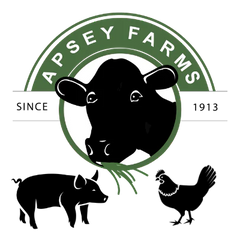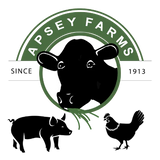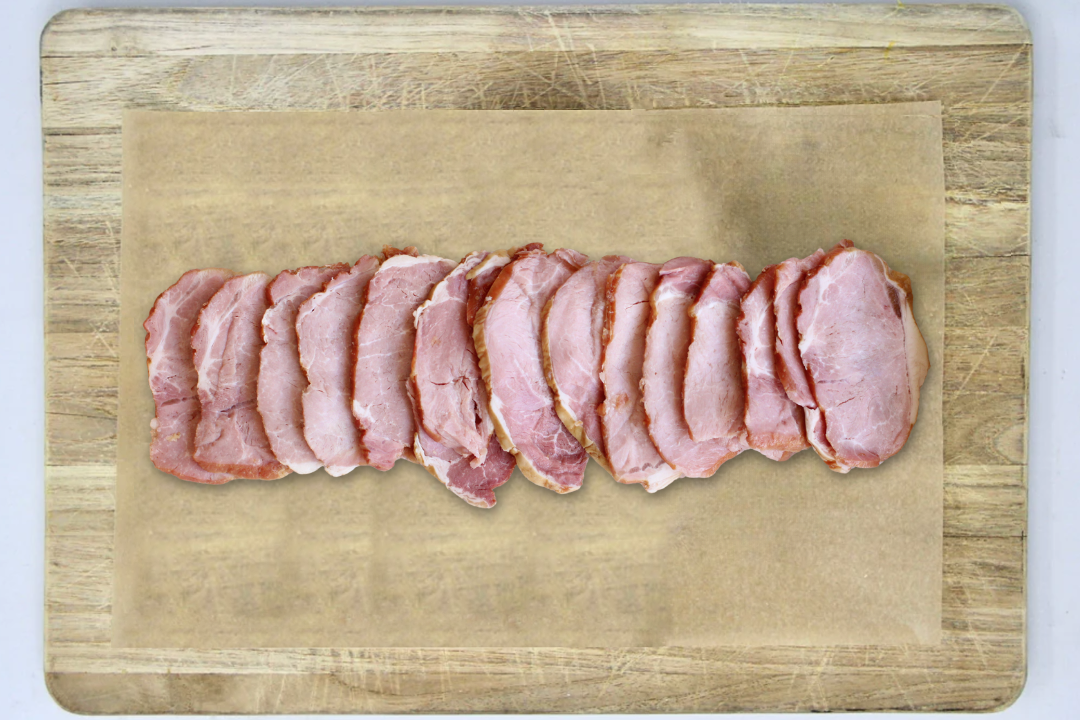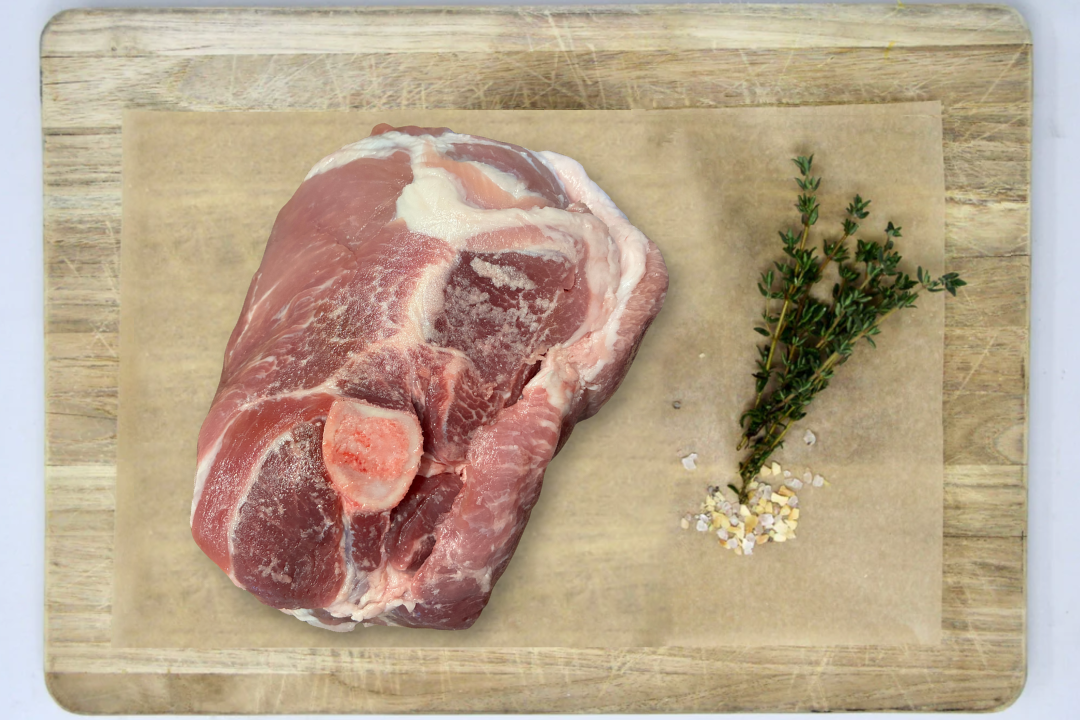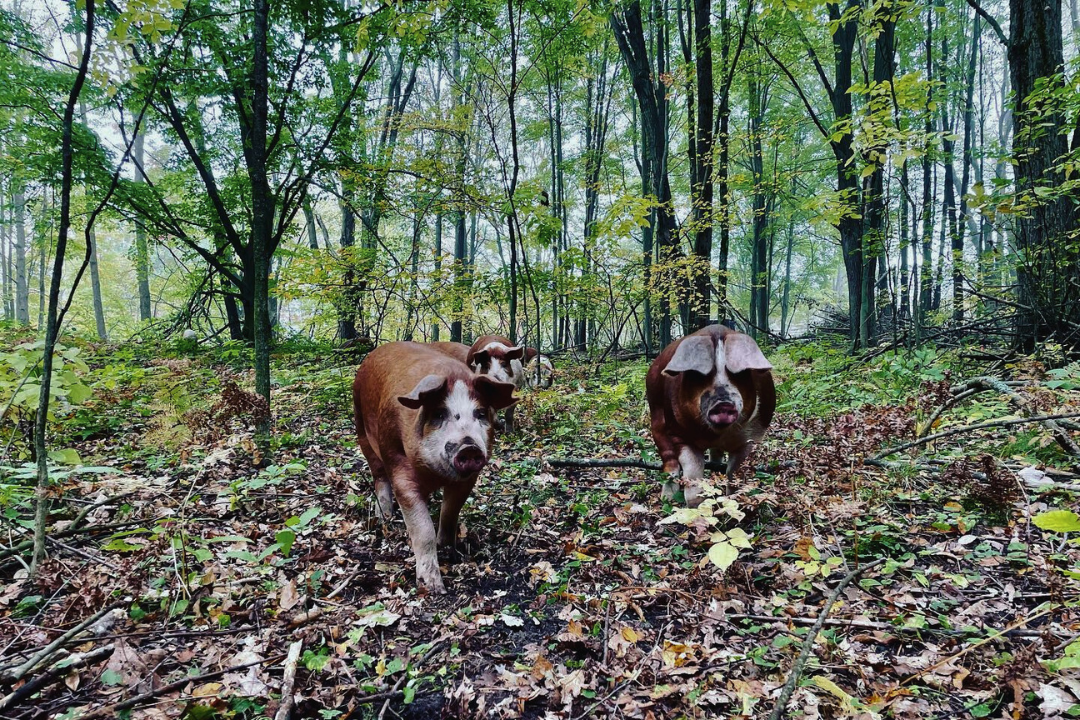
Why Regeneratively-Raised Pork
SHOP PORKWhen was the last time you remember seeing pigs out on pasture, or rooting around a forest while you're driving on a country road or cruising down the interstate?
The sad fact is that greater than 97% of pigs are raised inside large confinement barns without access to pasture and forests they so love. [1]

Conventional Pork
Conventionally raised pork, confined to limited indoor spaces, lack exercise and access to a natural diet. Their cramped living conditions lead to a diet heavy in grains. These grains increase their polyunsaturated fatty acids (PUFAs) levels and lower the vitamin content of the pork. [4]
“97% of commercial hogs are raised in small, indoor, concrete-floored pens. Almost half are raised on Concentrated Animal Feeding Operations (CAFO), also known as factory farms. These intense operations lead to overcrowding, animal stress, disease, and excessive waste.” [1]
Pork Raised Right
At Apsey Farms, all of our pork is regeneratively-raised on pasture or in the forest as nature intended and supplemented with corn & soy-free low-PUFA feed on our family farm and partner farms.
This method of farming is sustainable and regenerative, improving the land's health while providing animals with a humane environment. Our rotational foraging means greater parasite resistance, and less disease for our pork – we don't need to use chemical dewormers, antibiotics, hormones, etc. [2] [3]
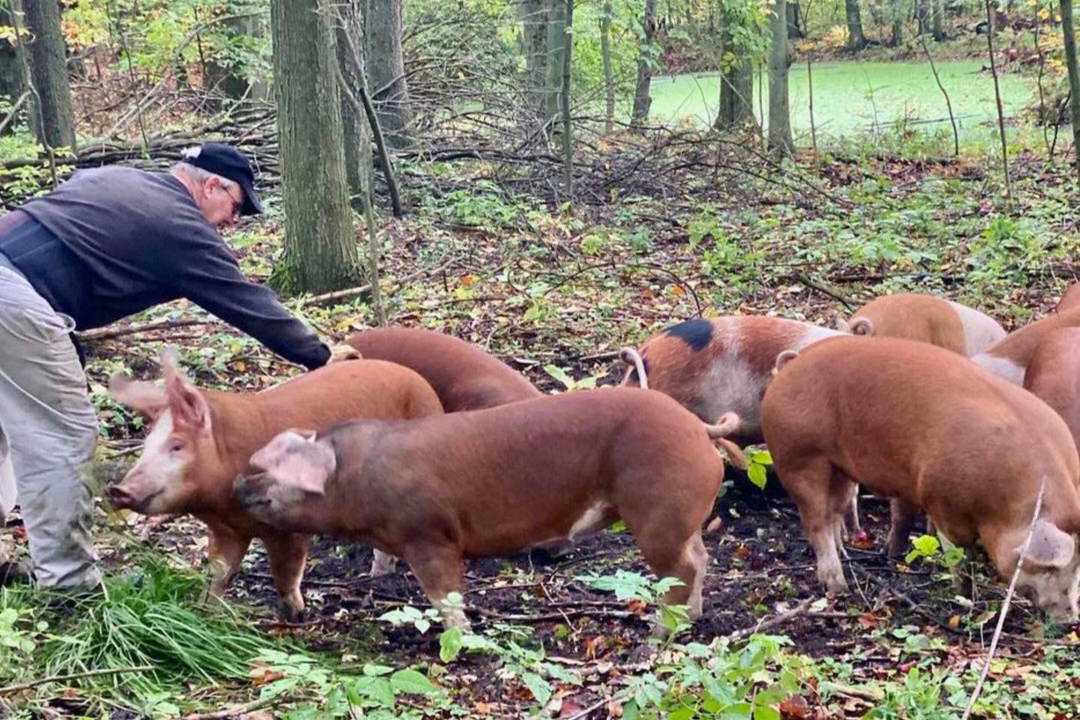
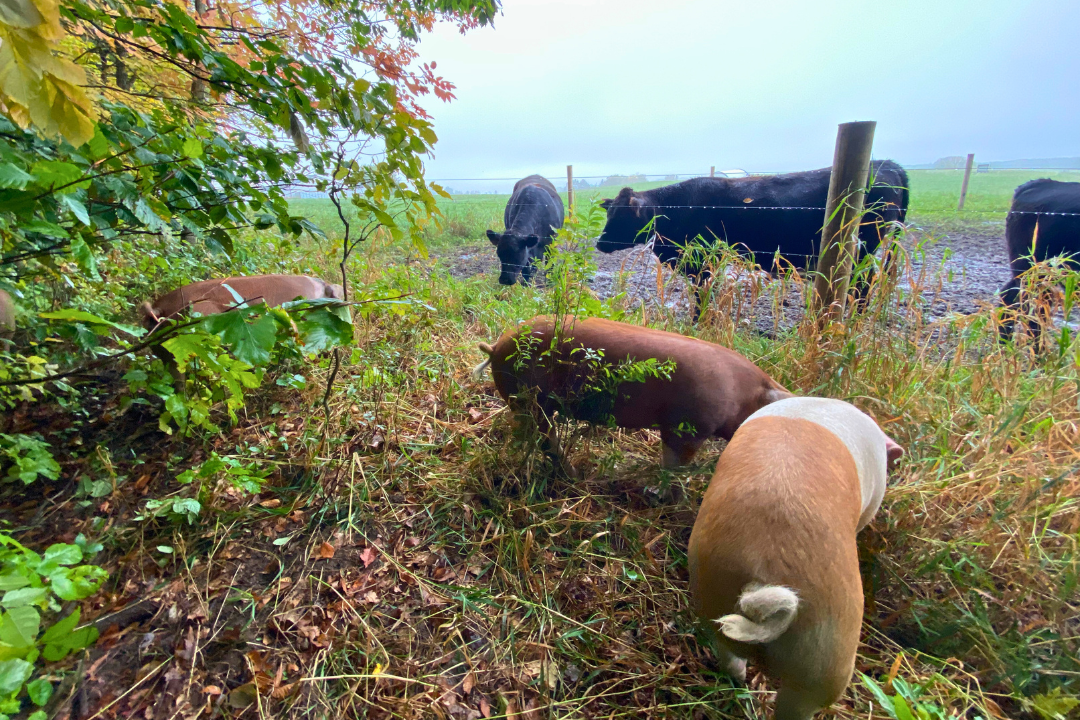
Raising all of our livestock regeneratively as nature-intended is not nearly as efficient, but it's the right thing to do.
Better for you. Better for the animals. Better for the planet. Our regenerative farming practices leads to our low-PUFA corn & soy-free pork being healthier:
- Healthy living conditions
- Healthy pigs without the use of vaccines and antibiotics
- Fresh air and sunlight
- Access to fresh grass and bugs with non-GMO supplemental feed

Check Out the Most Nutritious Pork
Sources
[1] Rodale Institute. (2024). Pastured pork.
[2] Giller, K. E., Hijbeek, R., Andersson, J. A., & Sumberg, J. (2021). Regenerative Agriculture: An agronomic perspective.Outlook on Agriculture,50(1), 13-25.
[3] American Pork Producers Association. (2018). The nutrition of pasture-raised pork and meats.
[4] Miller, M., Gerval, A., Hansen, J., & Grossen, G. (2022). Pork expected to continue leading global meat imports as demand rises. USDA Economic Research Service.
